The products and services mentioned below were selected independent of sales and advertising. However, Don't Waste Your Money may receive a small commission from the purchase of any products or services through an affiliate link to the retailer's website.
These days, you don’t need to be a member of NASA for stunning front-row views of the cosmos. With modern telescopes, you can view the moon, the rings of Neptune, nebulae, globular clusters and more all from the comfort of your own home. But that begs the question: What type of telescope should you buy to use at home?
MORE: Why you might see a string of lights in the night sky
We spoke to amateur astronomy clubs from coast to coast to identify the best telescopes for amateurs and aspiring pros alike, whether you live in the city, are a casual stargazer, getting into astrophotography, or looking to share the wonder of the universe with friends or family.
Jump To: Best Overall | Best Budget | Best Binoculars For Star-Gazing | Best Refractor Telescope for Beginners | Best Telescope for Astrophotography | Best All-In-One| Best Bulky Pick | Best Telescope for City Dwellers | Best Telescope for Observing the Sun | Bonus Accessory for Moon Observers
What To Look For
Aperture size
“A telescope is basically a light bucket,” says Ron Hranac of the Denver Astronomical Society. A telescope’s aperture size, often measured in millimeters or inches, refers to the diameter of the lens or mirror used to collect light in a telescope. In other words, a larger aperture means a telescope can collect more light, which leads to brighter, more detailed images. Exercise caution against “aperture fever” however: A larger aperture size means a larger telescope to lug around.
Weight
According to all our experts, the best telescope is one that gets used. “If [a telescope] is too big, it’s going to sit in a closet and collect dust,” says Rori Baldari of the Amateur Astronomers Association. Consider where you plan to store your telescope, how you’ll transport it (e.g. via car, public transportation, in a backpack), and what you’re willing and able to lift. “You only get one spine,” says Katherine Troche from the Astronomical Society of the Pacific. “Don’t break it trying to carry a 70-pound telescope!”
Investment
It can be easy to get caught up in the many gadgets and features offered by today’s home telescopes. However, consider everything you’ll need to comfortably practice astronomy at home. For example, not all telescopes come with mounts, and some accessories, such as battery packs or lunar filters, are not necessary but may make viewing more pleasant.
Other Questions To Answer
How much should you spend on a beginner telescope?
Our experts recommend spending at least $250 to $300 for a decent beginner telescope. They also recommend avoiding department store telescopes at all costs, as the quality of the telescopes is usually not worth the money. “[Department store telescopes] are generally low cost, and the box says something like, ‘500 power,’” says Hranac. “That’s absolute nonsense. Stay away from those.” For those a little hesitant to invest, our experts recommend a simple pair of binoculars as a more affordable place to start.
What kind of telescope do you need to see the planets in detail?
Telescopes come in many different flavors of optical design, or how the telescope collects and directs light. There are reflector telescopes, refractors, Schmidt-Cassegrains and more. While the optical design is important, aperture size (remember: larger apertures collect more light for better detail) and your viewing location (you’ll see less in a light-filled city than in the remote country) are also key factors in the amount of detail you’ll be able to see with your telescope.
What’s the best way to test out a telescope before making a purchase?
It’s estimated that there are more than 600 amateur astronomy clubs in the United States. Many astronomy clubs hold “star parties,” where members gather with their telescopes to view the night sky. Our experts recommend attending star parties with your local astronomy club to chat with members about different telescope options and perhaps even test a few out.
Our Recommendations for Best Telescopes for Home Use
1. Best Overall Home Telescope — Orion SkyQuest XT6 Classic Dobsonian Telescope
Aperture size: 6 inches | Weight: 31.5 pounds | Investment: $449.99, includes mount, eyepieces, iphone adapter and more | Value: $450 (Orion and Amazon)
Dobsonian telescopes are our top pick due to their ease of use, quality and price point. “Dobsonian” refers to the lazy-susan-style mount on which the telescope rests, adding stability and making it easy to spin and adjust. The Orion SkyQuest XT6 Classic Dobsonian Telescope provides great views of the Moon and planets like Jupiter and Mars, as well as more “deep sky” viewing of nebulae, star clusters or brighter galaxies like M82. “The possibilities with a 6-inch Dobsoian are endless,” says Troche.
- Pros: Great for kids, adults and beginners, Good for viewing the Moons and planets
- Cons: May occasionally require collimation, which means adjusting interior mirrors for better viewing
2. Best Budget Telescope — Celestron Firstscope Telescope
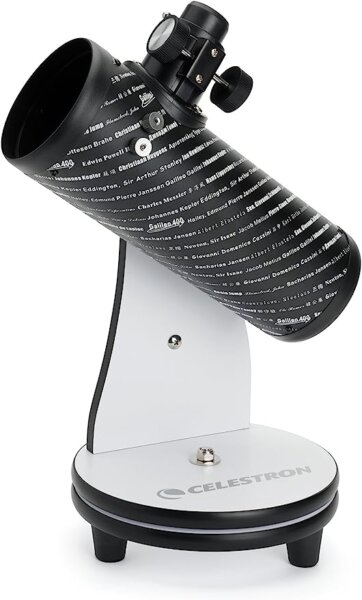
Aperture size: 76 millimeters | Weight: 4.5 pounds | Investment: $71.95, including mount and eyepieces | Value: $72 (Amazon and B&H)
This tabletop telescope is the perfect entry-level option for anyone who wants to observe the moon or the rings of Saturn. At just 4.5 pounds, the Celestron Firstscope is easy to store, use in the backyard or even take on camping trips. “This is a legitimate telescope that will offer surprisingly good views and won’t hurt your budget,” says Troche.
- Pros: Highly portable, Affordable
- Cons: Less powerful
3. Best Binoculars for Those Not Yet Ready to Invest — Celestron–Nature DX ED 12×50 Premium Binoculars
$230 at Amazon $260 at The Home Depot
Aperture size: 50 millimeters | Weight: 1.75 pounds | Investment: $259 | Value: $230-$260 (Amazon and The Home Depot)
Several of our experts agreed that investing in a pair of lightweight, 12×50 binoculars is a great place to start for those that would like to dip their toes into home astronomy without first taking the leap in buying a telescope. The Celestron Nature DX ED 12×50 Binoculars can be used to view features on the moon at night or for daytime activities such as birdwatching. These binoculars are also tripod adaptable for a steadier view.
-
- Pros: Multipurpose, Affordable
- Cons: Limited viewing
4. Refractor Telescope for Beginners — EvoStar 80ED Apo Refractor by Sky-Watcher
Amazon - Aperture size: 80 millimeters | Weight: 7.3 pounds | Investment: Around $720, includes carrying case and eyepieces, but no tripod | Value: $730-$732 (B&H and Amazon)
Refracting telescopes are known for their clarity, sharpness and crispness, but they are often more expensive than reflecting telescopes. If you’re willing to spend for finer optics, consider the Sky-Watcher EvoStar 80ED Apo Refractor as a starter telescope. The EvoStar comes with a foam-lined aluminum case, two eyepieces and more.
- Pros: Does not require collimation, or adjusting interior mirrors for better viewing, Better optics
- Cons: More expensive, Does not include tripod
5. Best Telescope for Astrophotography— Takahashi Epsilon E-160ED Reflector
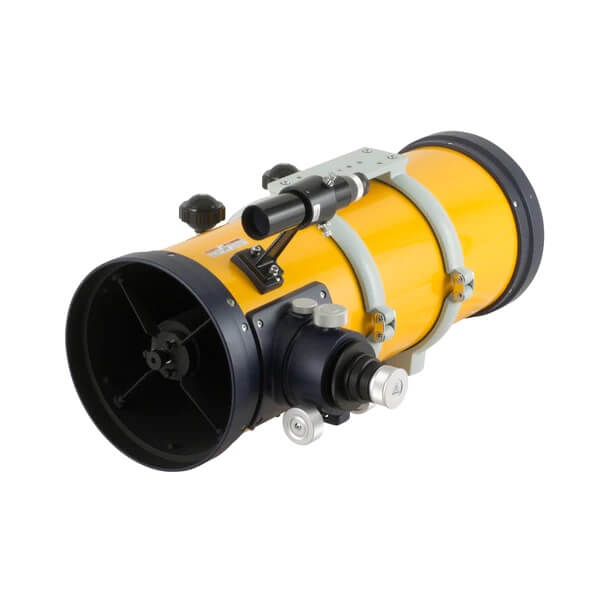
$4660 at Takahashi $4660 at Telescopes.net
Aperture size: 160 millimeters | Weight: About 15 pounds | Investment: $4,660, includes telescope only | Value: $4,660 (Takahashi and Telescopes.net)
The Epsilon E-160ED Reflector telescope by Takahashi features the perfect balance of ease of use and performance for those ready to invest in astrophotography. The key to getting some stellar shots? “It’s just time, patience and dedication,” says Baldari. Of note, the Epsilon E-160ED Reflector does not come with a mount, tripod or eyepiece, so you’ll need to buy those separately.
- Pros: Designed for astrophotography
- Cons: Mount, tripod, finder sold separately, Price
6. Best All-In-One or “GoTo” Telescope — Celestron NexStar 90SLT Computerized Telescope
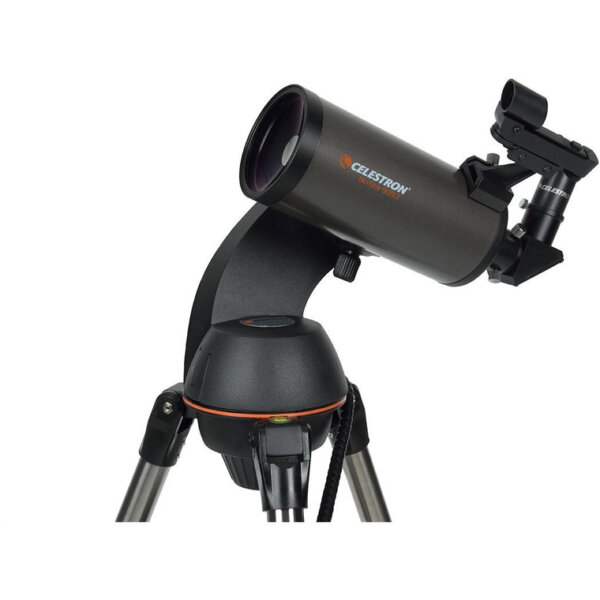
Aperture size: 90 millimeters | Weight: 11.99 pounds | Investment: $539.95, includes everything to start | Value: $479-$530 (Amazon and HSN)
If you’re looking for great views of the moon, Jupiter’s moons, the rings of Saturn and more — but without any hassle — our experts recommend the Celestron NexStar 90 SLT. The NexStar 90 SLT comes with everything you need — pre-assembled tripod, eye pieces and more. — and a computerized scope that finds objects in the night sky for you. “I joke and call it ‘the franchise’,” says Troche. “Even though it’s small, it packs a really good punch.”
- Pros: Finds objects for you, Portable and lightweight
- Cons: May want to buy a battery pack for lengthier viewing
7. Best Telescope for Those With More Storage space — Explore FirstLight 10-Inch Dobsonian Telescope by Explore Scientific
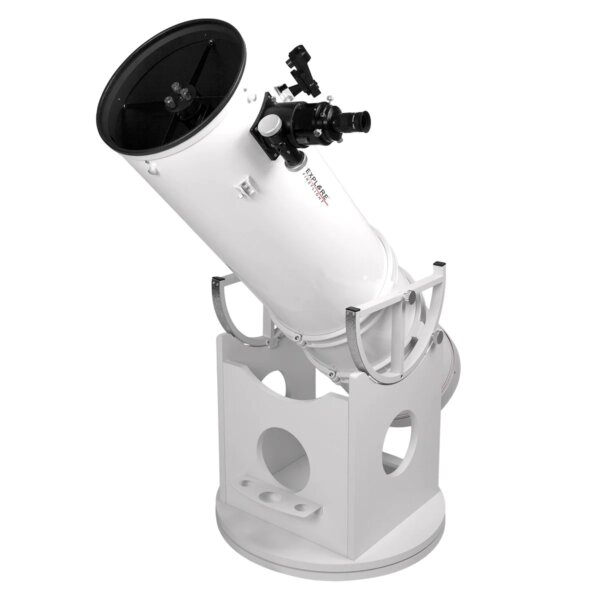
Aperture size: 10 inches | Weight: 61 pounds | Investment: $850, includes mount, eyepiece, red dot viewfinder and smartphone adapter | Value: $500 (Explore Scientific)
A larger Dobsonian telescope, such as the Explore FirstLight by Explore Scientific, is a great choice for those with a little more space and fewer city lights. Set up the Explore Scientific in the backyard to see planetary details and deep sky objects. Plus, the Explore FirstLight comes with an adapter that allows you to take photos by attaching your smartphone.
- Pros: Great for deep sky objects, Versatile
- Cons: Bulkier and heavier
8. Best Telescope for City Dwellers — Sky-Watcher StarTravel 120 AZ3
Aperture size: 120 millimeters | Weight: 6.5 pounds | Investment: $460, includes everything to get started | Value: $460 (Amazon and B&H)
Check out the StarTravel 120 AZ3 if you’re looking for a lightweight, compact telescope option that can be easily transported and stored. Depending on your location this refractor telescope can view deep sky objects such as star fields, clusters, nebulae, galaxies and planets. What’s more, it comes with everything you need to get started immediately, including a tripod and two eyepieces.
- Pros: Lightweight and compact, Good for beginners
- Cons: Less powerful
9. Best Telescope for Observing the Sun — Coronado Personal Solar Telescope
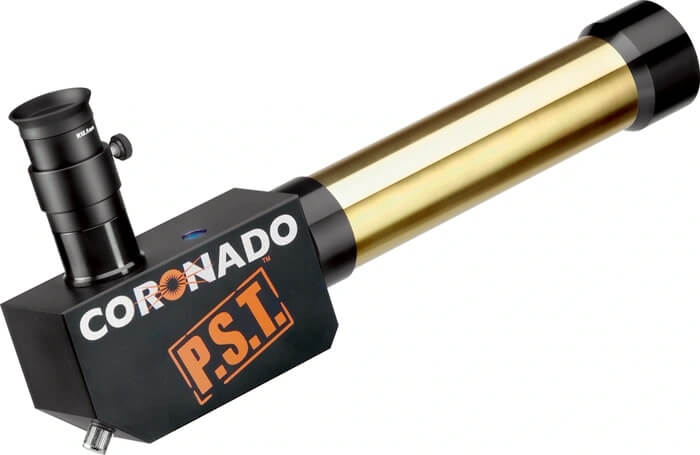
$900 at Orion $900 at Meade Instruments
Aperture size: 40 millimeters | Weight: 3 pounds | Investment: $899.99, includes eyepiece but no tripod | Value: $900 (Orion and Meade Instruments)
Safely view our closest star with the compact Coronado Personal Solar Telescope (PST) by Meade. With the Coronado PST, you can view details on the sun’s surface, such as flares, filaments, plages and surface granulation. Solar telescopes are also a great option for viewing solar eclipses — just be sure you’re using appropriate and safe equipment when doing so!
- Pros: Affordable (for a solar telescope), Compact
- Cons: Very niche use
10. Bonus Accessory for Moon Observers— Orion 05662 1.25-Inch 13 Percent Transmission Moon Filter
Aperture size: Fits 1.25-inch eyepiece barrels and telescopes with larger apertures (i.e. greater than 6 inches) | Weight: 0.2 ounces | Investment: $15.99 | Value: $$15.99 (Amazon and Orion)
The moon can be incredibly bright when viewed through a telescope which is why a moon filter such as this option from Orion can reduce glare to protect your eyes and help you see more details. This filter sits directly on the eyepiece barrel of your telescope and transmits only 13% of incoming light. “You absolutely should invest in a moon filter for your eyepiece,” says Troche. “It’s a non-starter.”
- Pros: Affordable, Easy to install
- Cons: Not included in most telescope kits
Sources
- Ron Hranac, Denver Astronomical Society
- Katherine Troche, Astronomical Society of the Pacific
- Rori Baldari, Amateur Astronomers Association
Related Stories
- The best gifts for teen boys
- James Webb Space Telescope reveals remarkable look at Neptune’s rings
- See the Webb telescope’s stunning new look at a distant neighbor
This story originally appeared on Don't Waste Your Money.


